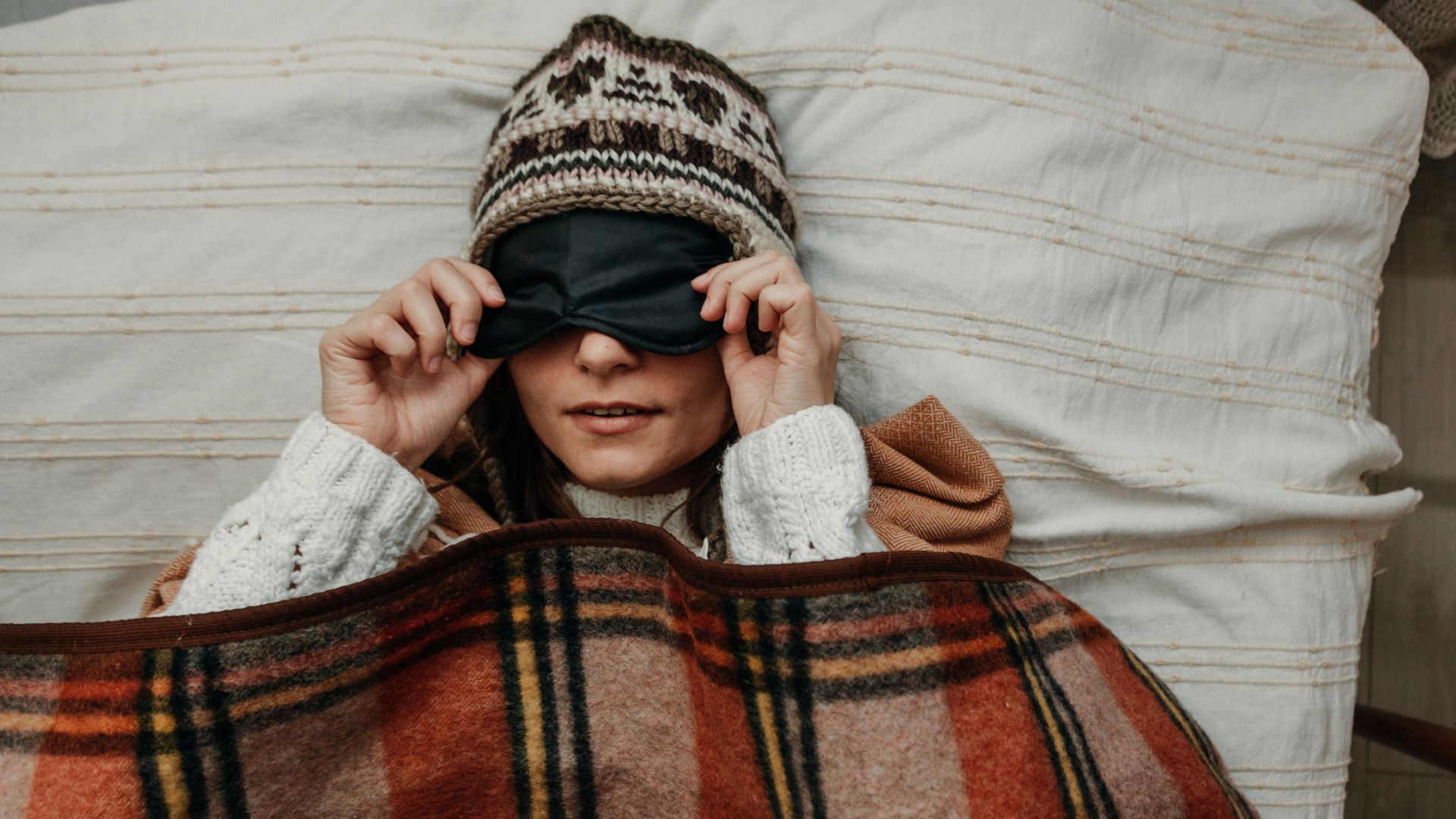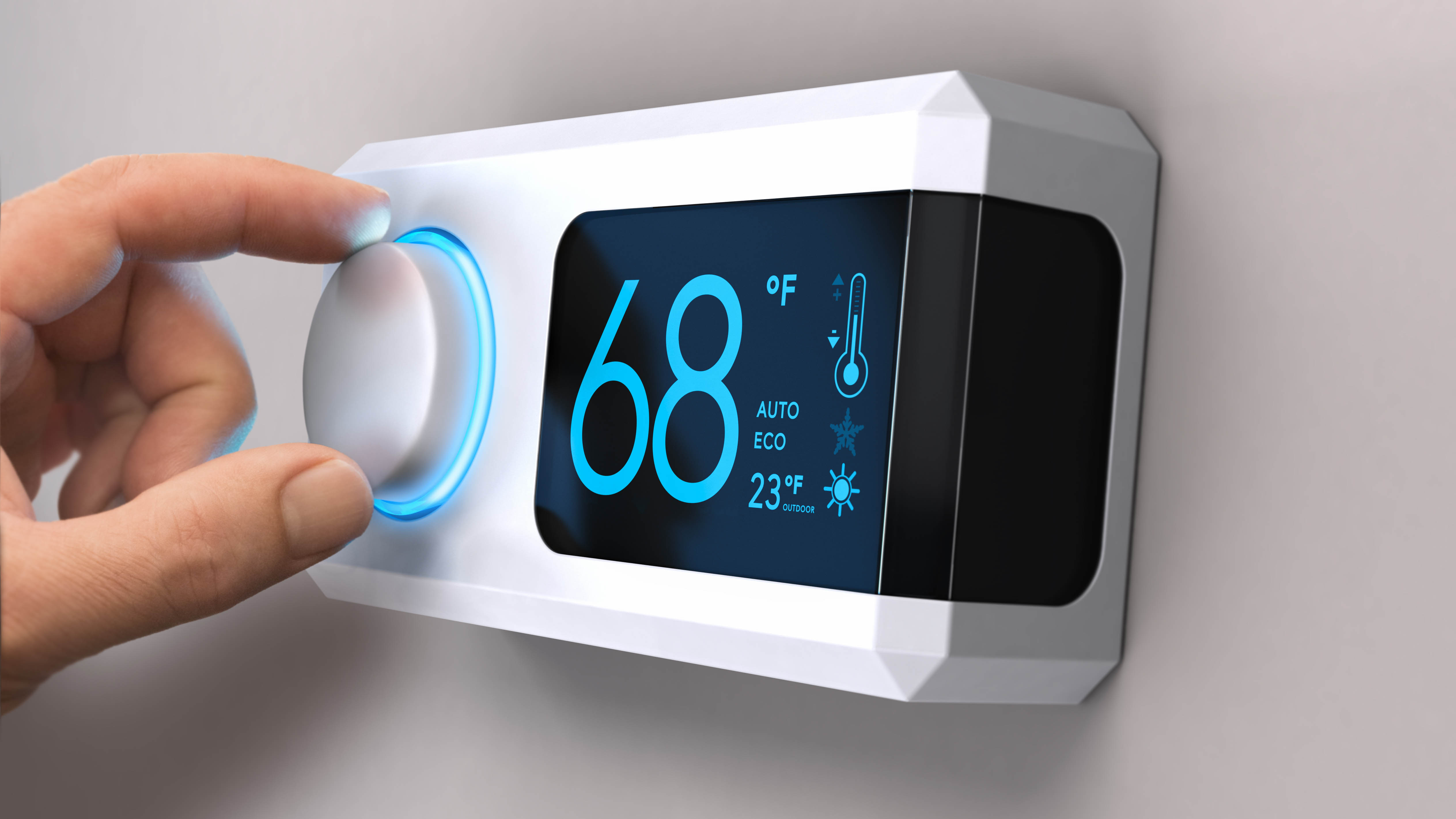This simple bedroom hack helps you fall asleep faster and sleep through the night – here’s why
The right bedroom temperature is key to quality sleep

There's one bedroom hack that is sure to help you fall asleep and stay asleep, and that's ensuring your bedroom is the perfect temperature. In fact, your room temperature can significantly affect the quality of your sleep. As well as causing you to wake up in the night, the temperature in your bedroom can also impact how fast you fall asleep and how long you sleep for.
Even if you’re sleeping on one of the best mattresses for your needs, a room that is too hot or too cold can be disruptive for your sleep. As part of the winding down process, our body temperature drops, which is a key signal to our brain that it's time to switch off for a night's rest. However, if your bedroom is too cold or too hot, maintaining the right body temperature for sleep can be difficult.
It's important to remember that room temperature can also affect the comfort of your mattress. For example, colder temperatures will cause even the best memory foam mattresses to feel firmer. A quick sleep solution is investing in a smart thermostat which can adjust your room temperature depending on whether you're home, the weather, the time of day and other factors. But what is the right temperature for sleep? Here's everything you need to know...
What is the perfect temperature for sleeping?
The ideal room temperature for sleeping is between 15 to 19°C (60 to 67° F.) While this is an optimal range for adults, as we head into our senior years, our bodies begin to change.
This includes a drop in our body temperature, a decrease in the production of melatonin (the sleepy hormone) and fluctuations in our cortisol (also called the stress hormone) levels. In fact, a recent study showed that the best temperature for older adults to sleep in should ideally be between 20 and 25°C (68 and 77°F).

How does the perfect bedroom temperature help you fall asleep faster?
We know by now that our sleep quality is largely controlled by our circadian rhythm— our body's sleep cycle. This in turn is impacted by several other external and internal elements such as melatonin production, light exposure and the body's core temperature.
Our normal body temperature is around 37°C (98°F) and it will typically drop by one to two degrees during the course of the night. This drop will start two hours before your usual bedtime, when your body also releases melatonin, which is the hormone responsible for inducing sleep.
Sign up to get the BEST of Tom's Guide direct to your inbox.
Get instant access to breaking news, the hottest reviews, great deals and helpful tips.
If your room temperature is anywhere above or below the recommended range, it will likely disrupt the process of how melatonin induces sleep. However, if it is within the range, your environment can help you achieve the right body temperature to fall asleep quickly.
How does it help you sleep through the night?
The right temperature will not only help you fall asleep faster but will keep you asleep for longer too. As research shows, exposure to temperatures that are too hot, or too cold, will increase wakefulness and decrease rapid eye movement and slow wave sleep. And we've all experienced the uncomfortable tossing and turning that comes with a hot bedroom.
Out of the four stages in our sleep cycle, the N3 or 'deep sleep' phase is this slow wave sleep, and it is considered the most restorative. Not only is it important for maintaining healthy immune and glymphatic systems (the latter is considered the brain's waste clearance system), it's also the time when your body releases the most growth hormones.
An uninterrupted deep sleep phase is essential for feeling fully rested, so setting your bedroom temperature to between 15 and 19°C (60 to 67° F) is a crucial step to help you achieve just that.

When should you change the temperature of your bedroom for sleep?
Ideally, adjust the room temperature in your bedroom by changing your thermostat around an hour before your usual bedtime to give your room time to cool down to between 15 to 19°C (60 to 67° F).
This will aid the drop in your core body temperature, helping you prepare for sleep. To ensure you sleep throughout the night, you'll want to keep your thermostat set the this temperature to prevent the body from heating back up while you're asleep, which could lead to nighttime waking.
If you'd like to wake up in cozy, warm bedroom, you can set a timer for your heating to kick in an hour before you wake up. Your body naturally warms in the morning in any case, as it prepares you to transition from sleeping to waking.
How to cool a hot bedroom if you don’t have AC
Keeping your bedroom at the optimum temperature for sleep is easier when you have an air conditioner, but there are some alternatives if you don't...
- Open your bedroom windows to promote air circulation during the evenings, or when it's cooler outside.
- Research has shown how taking a warm bath before (but not immediately prior to) sleep can help increase your deep sleep and sleep quality, by preparing your body for cooler temperatures at night.
- Reduce night sweats or hot sleeping by using one of the best cooling mattresses currently available. All of these beds are designed to keep you from overheating throughout the night.
- If you're living somewhere warm, it is advisable to use a duvet with a tog rating between 4.5 to 7.5.

Becky is a Sleep Staff Writer at Tom’s Guide covering all things sleep-related including product reviews, research studies, news and explainers. She works on specialist bedding content and is responsible for buyer’s guides like the best pillows for all sleepers and best mattress protectors focusing on popular brands such as Tempur-Pedic, Avocado, Coop Home Goods and more. Becky is a PPA accredited journalist who is keen to explore the intricacies of sleep, its effects on skincare, mental wellbeing and work performance. While not thinking of sleep, she can be seen reading in cosy bookshops or learning about global food culture.
